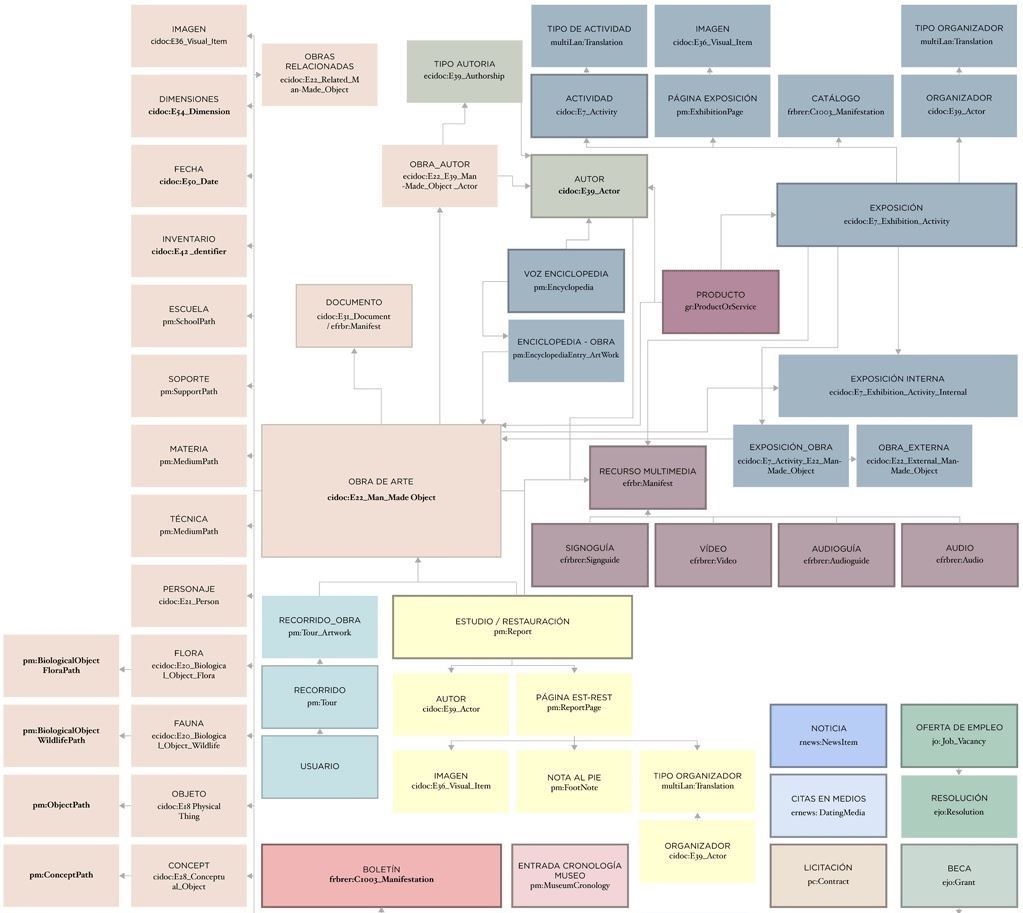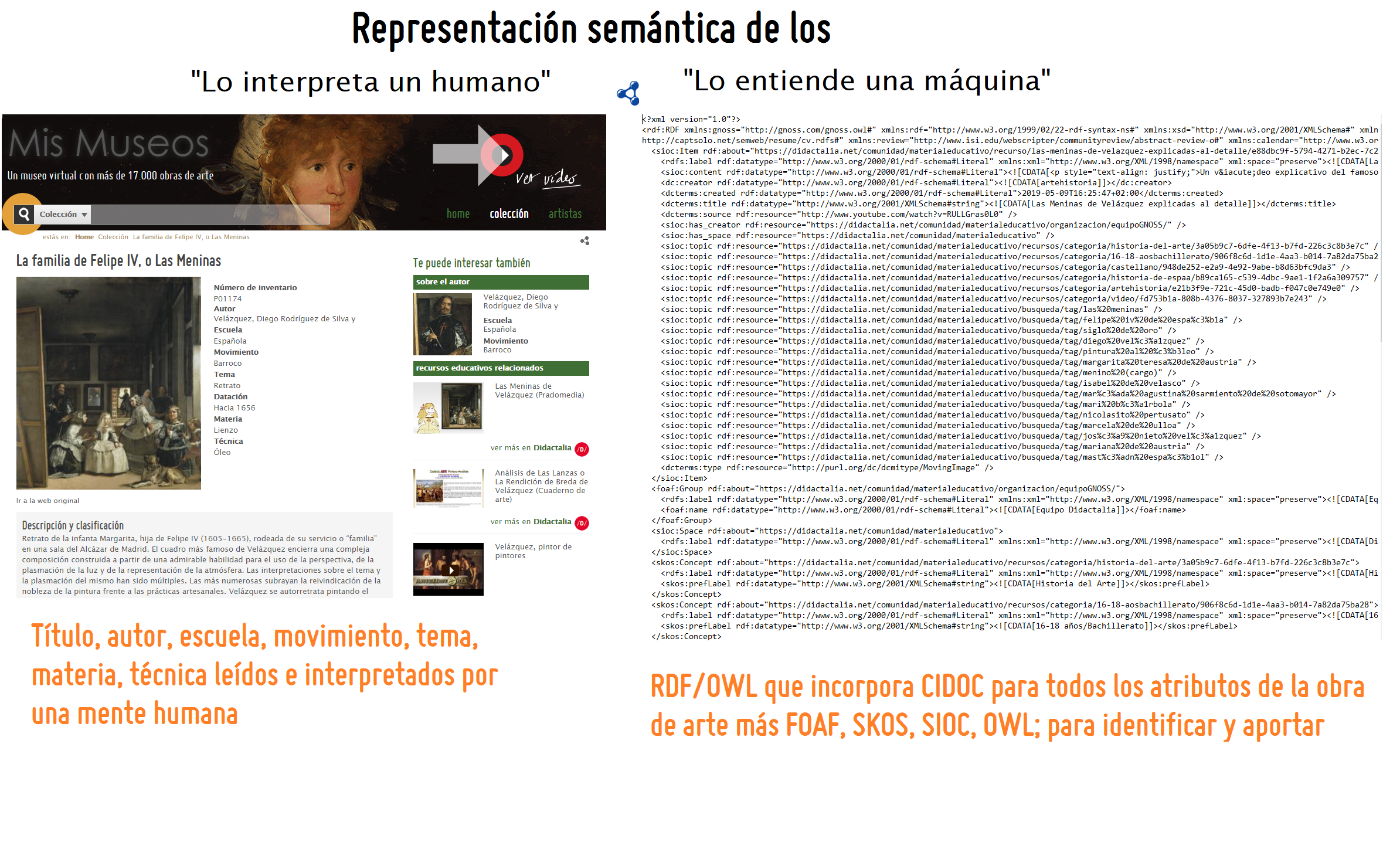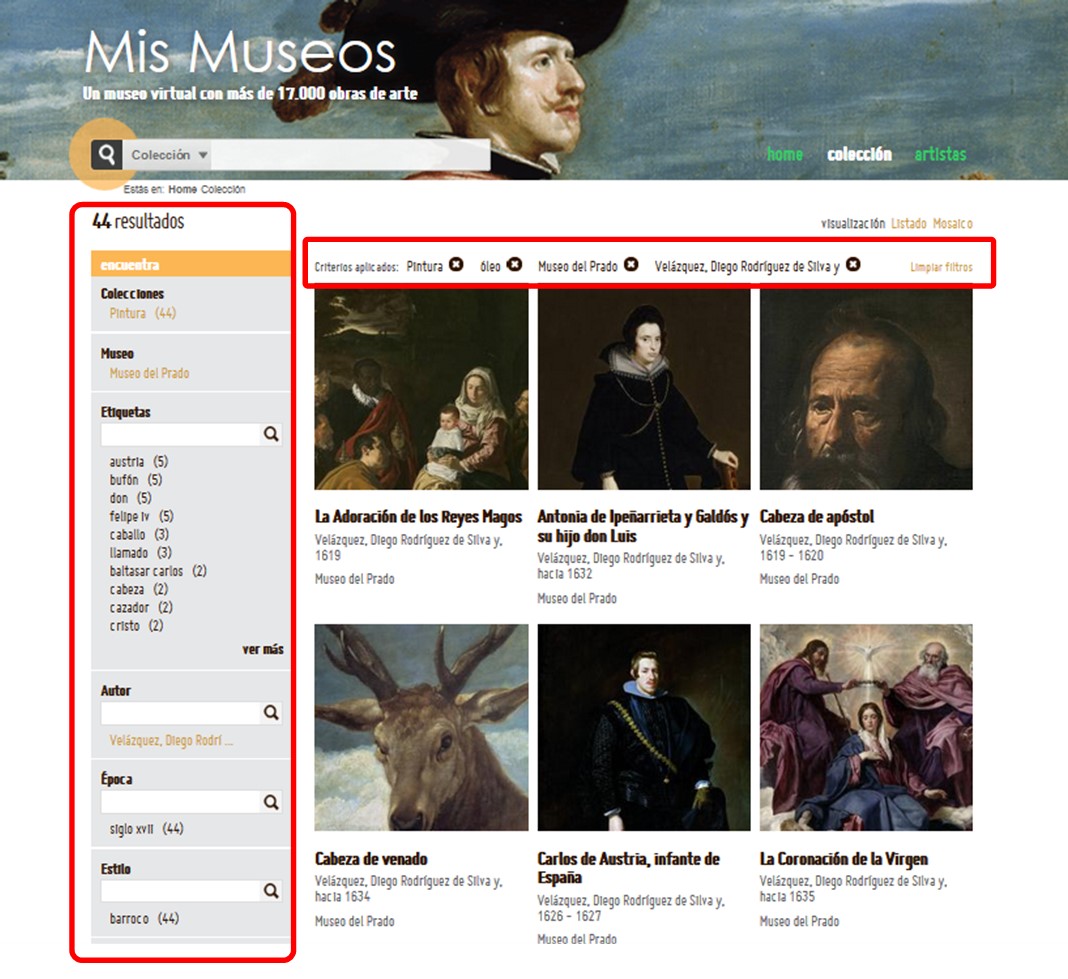
Thyssen Bornemisza Museum: Semantic Digital Model Consulting
Strategic Consulting: technology at the service of art
GNOSS carried out for the Thyssen Museum a strategic consulting project linked to the transfer of knowledge on how semantic technologies, the construction of a Knowledge Graph and the application of cognitive technologies could help the Museum to digitally express all the beauty and knowledge existing in the Institution.
- Cliente
- Cultura
Created in 1988, the Fundación Colección Thyssen-Bornemisza belongs to the public sector and is in charge of managing the Museum, its conservation, study, public exhibition and dissemination of the collection of works of art that the Spanish State acquired in 1993. Since 2004, it is also in charge of the long-term loan of the Carmen Thyssen-Bornemisza Collection and the expansion of the Villahermosa Palace. Since the Museum was opened to the public in 1992, the number and variety of temporary exhibitions, educational programs and different cultural and commercial activities have increased.
A Semantic Digital Model
When it comes to expressing the knowledge of an institution on a website, it is often thought that "drawers" I enter the contents and what "labels" I give them so that they can be found when someone enters that sequence of characters. This way of approaching and approaching the publication of digital content through its filing and labeling is very limited and unproductive.
A Semantic Digital Model is thought from the nature of the contents, from the "entities" concerned, their attributes and their links with other entities, putting the user at the center, who must be able to interrogate according to their interests and intentions and obtain a more answer " intelligent".

From literals to entities
Semantics has to do with making a machine understandable, not just the format of the document, but its content, its meaning. How do I represent the contents of my institution in a way that is understandable by a machine? This is what we talk about when configuring a Semantic Digital Model. From a system that allows going from literals or sequences of characters to entities computable by a machine. For this, the most appropriate languages, vocabularies and ontologies are used.

Why a Semantic Digital Model?
The configuration of a Semantic Digital Model is a necessary condition and the first step to be able to create a unified, questionable, expressive and extensible Knowledge Graph, among whose most obvious exploits would be the configuration of a much more user-friendly, simple, useful and practical web experience where a user can search the information and learn while searching. Search engines that emulate the human way of reasoning, more pertinent contexts, more reliable recommendation systems, more productive information analysis and discovery systems are the fundamental advantages of this exercise and its practical application.

Caso de Éxito

